Patterns
Kits
sundries
knitting tools, buttons and notions, project bags and other pleasing little things
knitting tools, buttons and notions, project bags and other pleasing little things
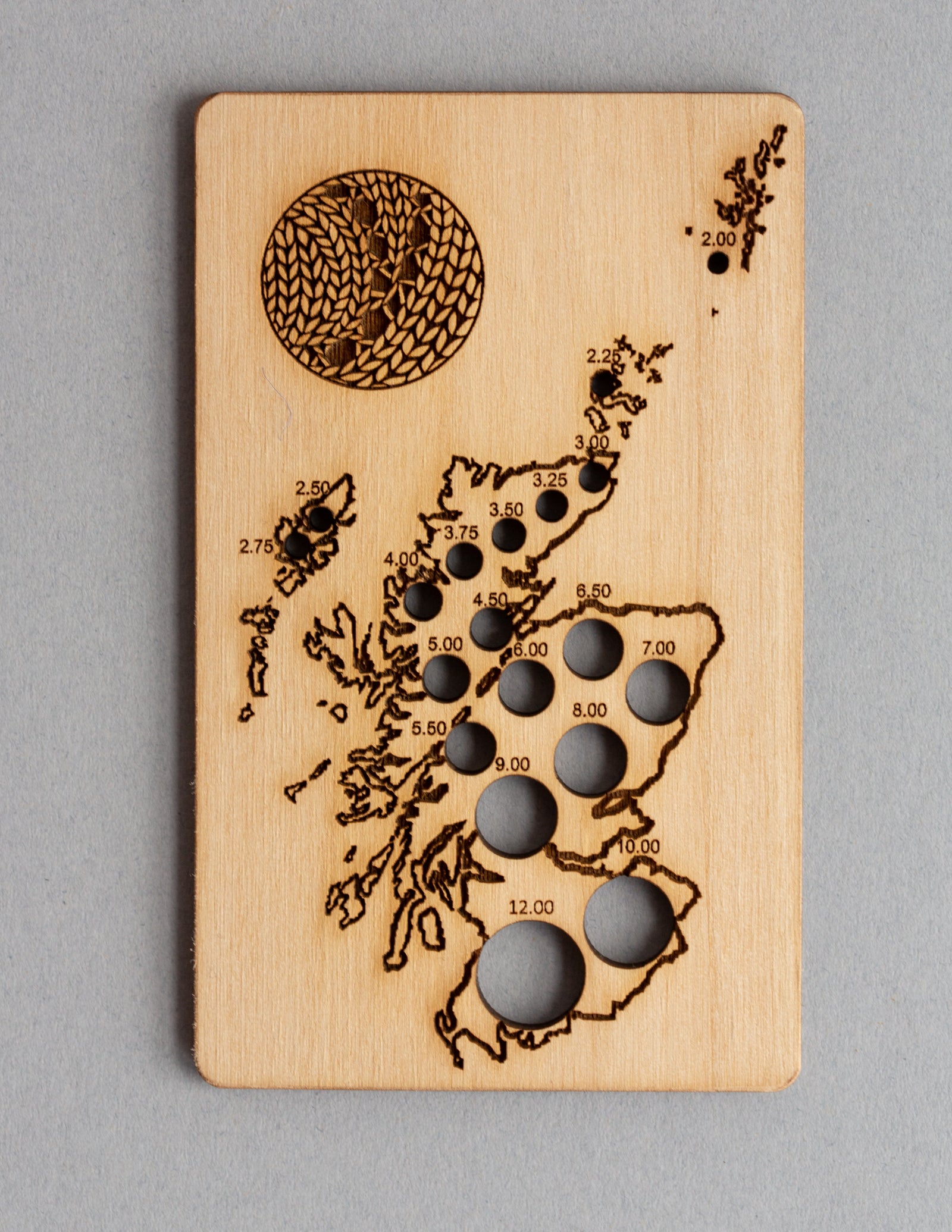
Exclusive Scotland needle gauge by Katrinkles
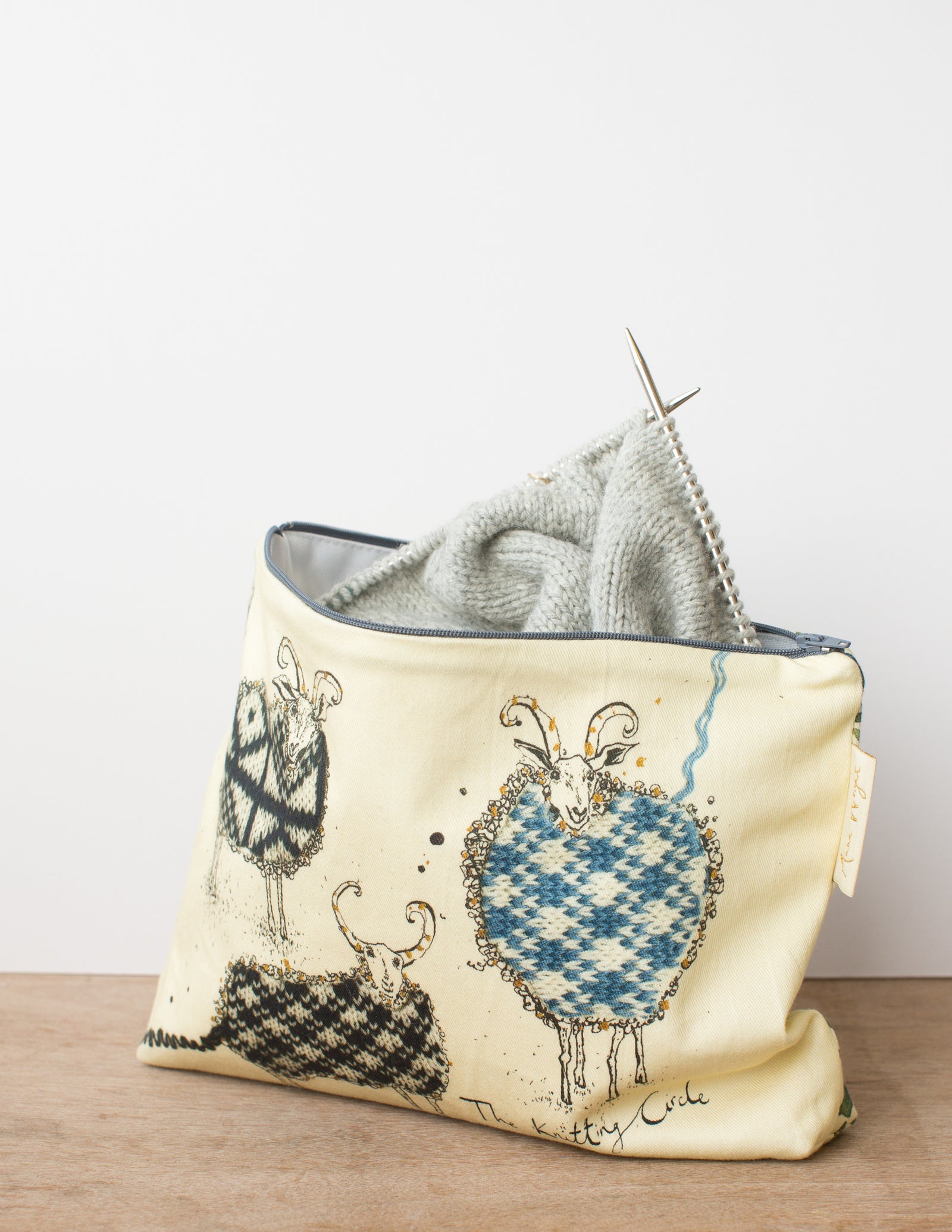
Zippered pouches in two sizes by our studio neighbour Anna Wright
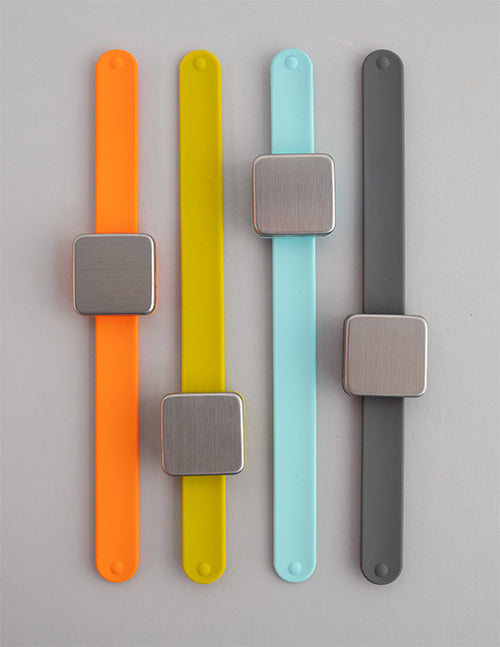
keep small tools accessible with the Maker's Keep
gift 2019
Subscribe to our Colourwork Club for a gift that lasts well into the new year. Your recipient will receive a new colourwork kit in Janurary, February and March
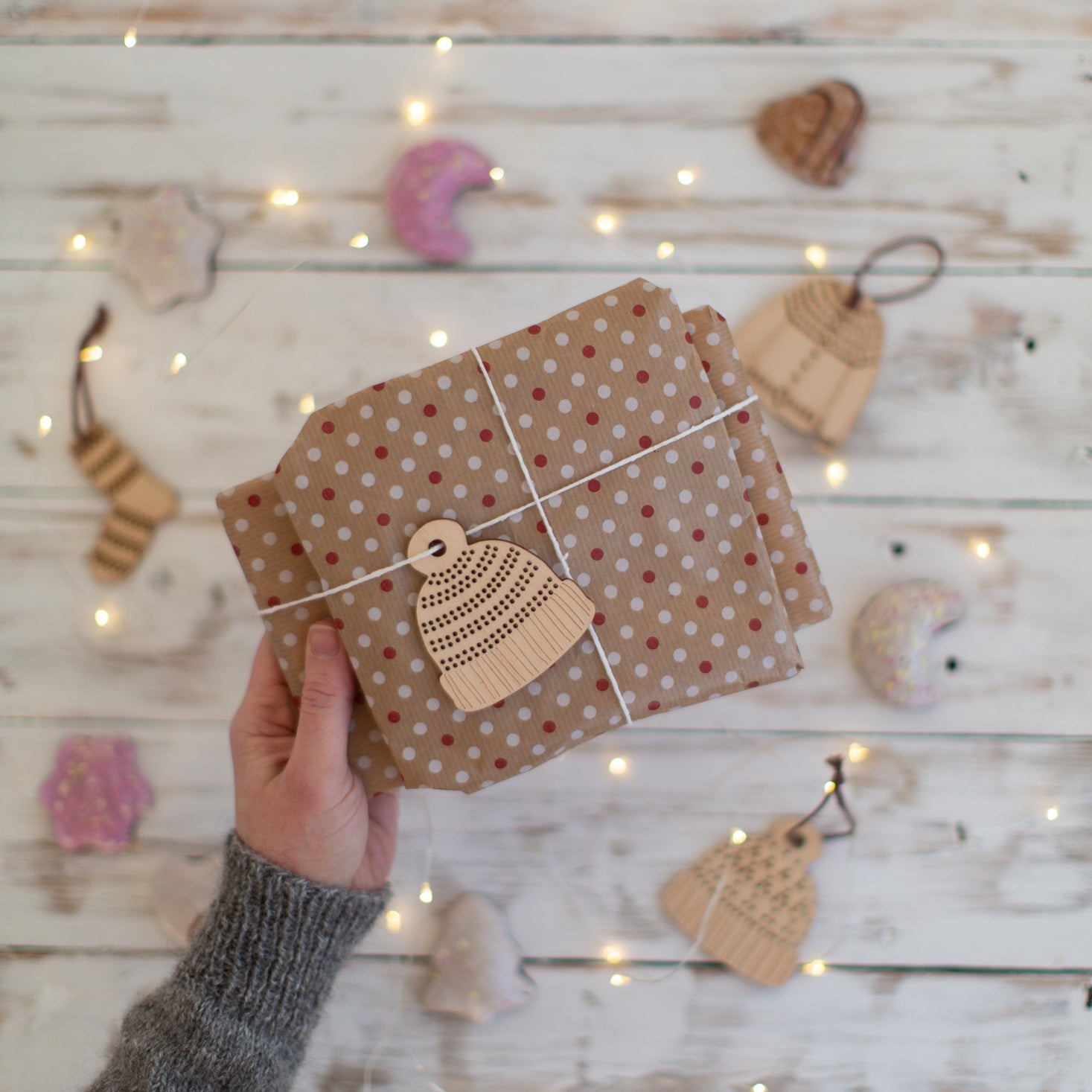
Subscribe to our Colourwork Club for a gift that lasts well into the new year. Your recipient will receive a new colourwork kit in Janurary, February and March


Last minute shopping? Gift cards are delivered electronically - forward the email or print it for your recipient. A range of amounts are available and gift cards don't expire.


Three ways to hold yarn for stranded colourwork
February 20, 2020
To go along with our new Colourwork Club accessory patterns, we’ve put together a series of blog posts to walk you through your first stranded colourwork project, along with tips and tricks perfect for all levels of experience.

The basic idea is simple: knit each stitch in the correct colour according to the pattern, carrying the unused colour behind and across the back of the work. When you have several stitches worked in one colour, the unused strand “floats” across the back of the work. Colourwork fabric is generally tighter than single colour knitting in the same yarn, so it’s important to keep the unused strands loose enough to stretch with the rest of the fabric. But how exactly do you manage multiple strands of yarn at the same time while maintaining the pattern gauge?
Here are the most common methods of holding your yarn for stranded colourwork. Keep in mind that everyone knits differently and you might find that you’re comfortable somewhere in between!
For this tutorial I'm using Rauma 3tr. Strikkegarn. The light grey (103) is the background colour, and the purple (142) is the foreground colour.
Throwing Both Colours with One Hand

AKA Both strands on the right.
This method works well with English-style knitting, in which the working yarn is wrapped around the needle with one hand, and then let go for each stitch. When working colourwork in this way, you simply pick up the strand that’s the correct colour for the next stitch, knit it, and then drop it to pick up the next colour. This method is easy to understand and pick up, as you are still only holding one colour at a time.
Things to watch out for: maintaining colour dominance. The strands can easily become twisted around each other if you always bring the next colour up in the same direction, which can also cause the pattern to recede and look little murkier than it would otherwise.


To work a stitch in the background colour (light grey), bring the strand OVER the foreground colour before working the stitch.


To work a stitch in the foreground colour (purple), pick up the strand from BELOW the background yarn.

Here you can see the light grey floats are above (closer to the needle) and the purple floats are below (further from the needle).
As you gain experience you might find that you can hold both strands in your right hand at the same time. This is usually done by tensioning the yarn around the pinkie and ring fingers and holding the one strand over the index finger and one over the middle, as in this video.
And yes, you can also throw both yarns using your left hand!
Picking Both Colours with One Hand

AKA Both strands on the left.
This method is great for Continental and Combined knitters who tension the yarn by holding it with the left hand, and use the needles to “pick” the working yarn and draw it through the stitch. The two colours can be held on the same finger or two different fingers (say, index and middle), and the right needle to used to grab the correct colour for the next stitch. This method is a bit faster than throwing, as you don’t need to pick up and put down the yarn for every stitch, and it’s easier to keep the balls of yarn from twisting.


To work a stitch in the foreground colour, maneuver the right needle tip so that it goes beneath the background strand, then bring up a stitch from the foreground yarn.

To work a stitch in the background colour, work a normal continental knit stitch. With the background colour held on the index finger, it'll always be kept above the foreground colour to maintain colour dominance.

The two strands can also be held on the same finger, although they'll want to snug up right next to each other. A colourwork yarn thimble can help with this by holding the strands apart from each other.

Two Hands: One Colour in Each

Two-handed colourwork is a blend of both throwing (with the right hand) and picking (with the left hand). This method is popular for a reason - it’s quick and efficient, plus you look bad-ass doing it!

The dominant or foreground colour is held with the left hand, and the background colour is held with the right hand. Each stitch is worked in its correct colour, bringing the yarn from the right or left hand. As long as you consistently hold the same colour in the same hand, the yarns will automatically be in the correct position, under or over, to maintain colour dominance. This method also keeps the two yarns from tangling, and is generally the quickest way to work stranded colourwork (once you’re comfortable with it).

The biggest challenge with two-handed colourwork is getting even tension between the two hands. The English-style wrap tends to be tighter than a Continental knit, especially if you’re not usually a Continental knitter. So it’s extra important to watch out that your floats are consistently loose enough.
Maintaining Tension

As we knit, the completed stitches tend to bunch up on the right needle, making the width of the fabric seem narrower than it really is. If you draw your float across bunched-up stitches, it won’t be long enough once the fabric is relaxed and will cause the fabric to pucker.

Any way you work colourwork, there’s a simple trick to preventing floats that are too tight and cause the fabric to pucker: spreading the stitches out on the right needle before working the next colour.

After working a few stitches in one colour, simply spread out the stitches of that colour on the right needle so that they aren’t bunched anymore before working the next stitch in the other colour. Repeat every time you change colours, and you’re unlikely to end up with puckery fabric. Make sure you're also bringing the next colour under (for the foreground) or over (for the background) the other strand.

It IS possible to knit colourwork too loosely, but it’s much more common for it to be tight - so make sure you swatch, and go up a needle size or two if needed!
Don't forget to block!
It’s truly amazing what a bath will do. The water allows the yarn to relax and distribute itself evenly across the fabric, which locks the stitches in and makes your project look great!
Save this tutorial for later on pinterest!

Also in Journal
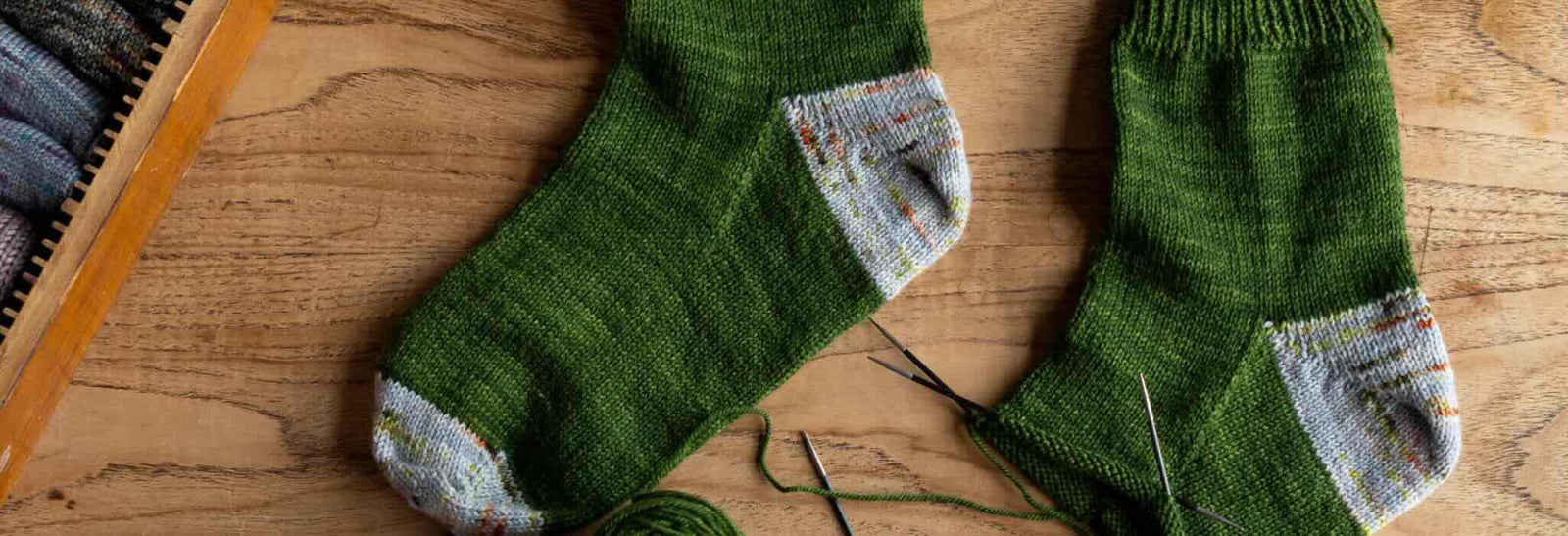
Deep Shadow Heel Tutorial
September 25, 2025

20 Years of Ysolda Knitting Patterns: Part 2
June 23, 2025

20 Years of Ysolda Knitting Patterns: Part 1
June 19, 2025
Recent Articles
-
Deep Shadow Heel Tutorial
September 25, 2025
-
20 Years of Ysolda Knitting Patterns: Part 2
June 23, 2025
-
20 Years of Ysolda Knitting Patterns: Part 1
June 19, 2025
-
Learn to Knit: Mattress Stitch
March 29, 2023
-
How to Knit a Scarf: A Beginners Guide to Scarf Knitting
March 23, 2023
-
Learn to knit: the long tail cast-on
February 03, 2022
-
How to Graft Your Knitting
December 09, 2021
-
Crochet Provisional Cast-on
December 02, 2021
-
Learn to knit: How to knit in the round with double pointed needles
November 25, 2021
-
Learn to knit: How to knit in the round using the magic loop technique
November 25, 2021
Free resources
-
KALS, step-by-step pattern guides and free patterns
Learn brioche with the free Daniel's Hat pattern
Tombreck - a free chevron beanie pattern
Working the brioche neck detail on the Polwarth sweater
Installing a zipper and ribbon, finishing wee Carson
Yarn colour ideas for Threipmuir sweater
Additional colourways for the Joy mitts (choose your pride flag)
How to join the shoulders on Wardie
How to join the pockets on Granton and Wardie
Finishing Resources for Granton
Broughton mittens tutorial part 1
Broughton mittens tutorial part 2
Broughton mittens tutorial part 3
Basics
Casting on
Decorative Channel Island Cast-on
Binding off
3 Easy Stretchy Bind-offs (p2tog bind-off; k2togtbl, k1 bind-off; Jeny's surprisingly stretchy bind-off)
Tubular Bind-off for brioche stitch
Increasing
Paired increase methods compared
How to continue in pattern while increasing and decreasing
Decreasing
Brioche stitch double decreases
Knitting in the round
How to Knit in the round using Magic Loop
How to Knit in the round using DPNs
Short rows
Swatching and gauge
Tips and tricks
Avoiding ears when binding off
Tighter purl stitches for neater cables and ribbing
Cabling without a cable needle
How to knit more symmetrical yarn overs
Bust darts in sweaters with all over stitch patterns
A magic formula for evenly distributing shaping
Superwash v Non-Superwash Wool
Picking up sts from the middle of the fabric
Reading knitting patterns
Understanding "continue in pattern"
Help! Where am I in my knitting project?
Using charts, even if you hate them
Finishing
Garment knitting
Joining the body and sleeves on a seamless bottom up sweater
Sizing
Ysolda’s sizing chart for knitwear designers
Inclusive garment knitting
How to pick a garment without a model for you (specifically addresses finding garment patterns when your gender identity isn't represented and the styles you want to knit might not be sized to fit your body)
How does ease affect inclusive size ranges?
Specific stitch patterns
Lace
Identifying and fixing mistakes in lace knitting
Colourwork
Getting started with stranded colourwork
Understanding colour dominance
Working stranded colourwork over small circumferences
Decreases in stranded colourwork
Holding the yarn for stranded colourwork
Ladderback Jacquard (a neat way to deal with long floats)
Cables
Cabling without a cable needle
Cabling without a cable needle on the wrong side
How to knit cabled decreases
Closed ring cable increases and decreasesBrioche
How to work brioche stitch in the round
Other crafts
Cross stitch
How to begin your first large cross stitch project
How to finish a cross stitch project with an embroidery hoop frame
Mending

Sign up today
Find out the latest news from the studio such as sales, pattern releases, and new workshops or KALs our learning community, The Knitwork. We also share helpful tips and exclusive subscriber discounts...



